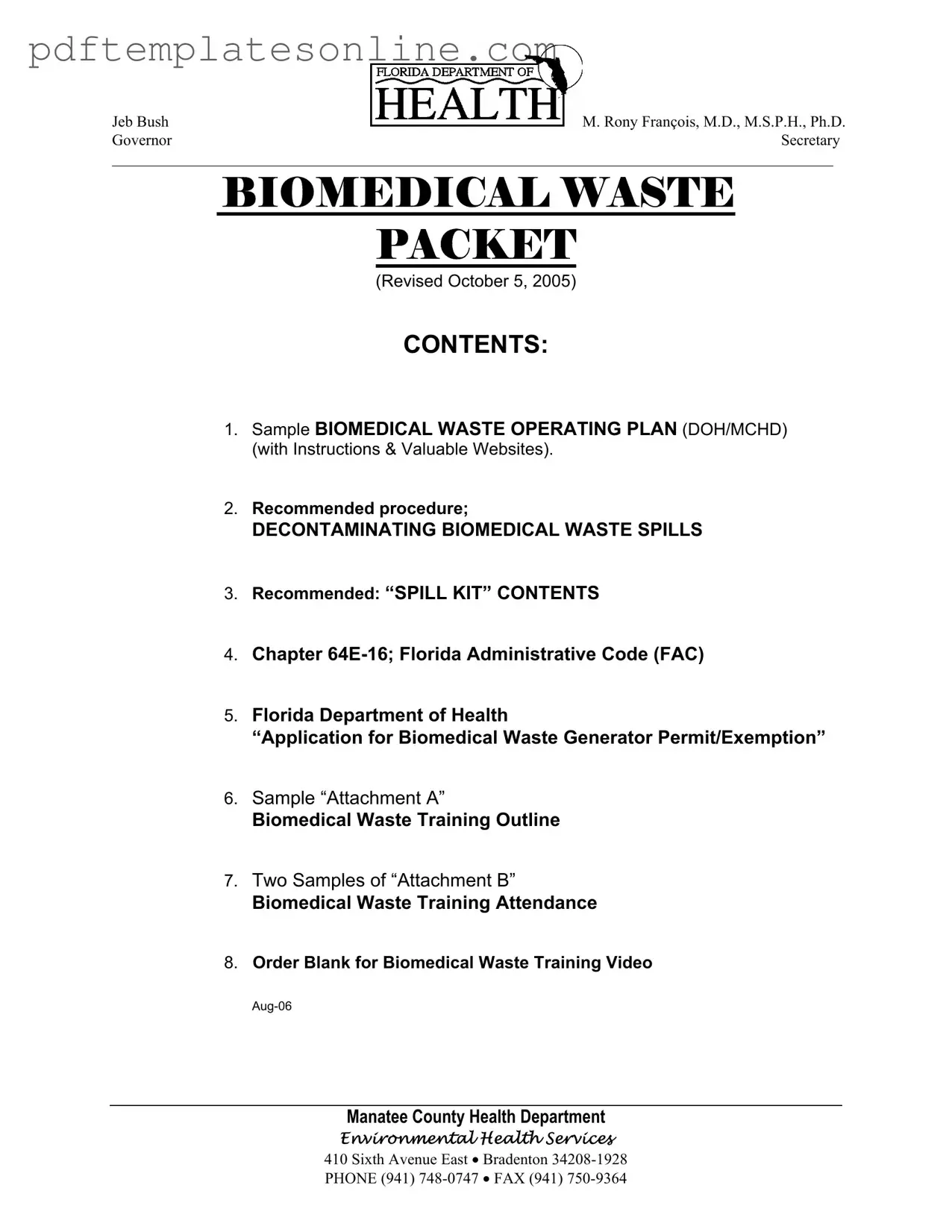Filling out the Biomedical Waste Operating Plan form is a critical task for any facility handling biomedical waste. However, many people make mistakes that can lead to compliance issues. One common error is failing to provide the facility name in the designated space. This may seem minor, but without a clear identification of the facility, the form loses its purpose and can create confusion during inspections.
Another frequent mistake is not specifying the location of employee training records. This information is essential for demonstrating that staff members are properly trained in handling biomedical waste. If this section is left blank or filled out incorrectly, it can raise red flags during an audit.
People often overlook the importance of detailing the items of biomedical waste generated in their facility. Simply listing “biomedical waste” without specifying the types can lead to misunderstandings about waste management practices. Clear identification helps ensure that the waste is handled appropriately and in compliance with regulations.
Many individuals also make the mistake of not checking whether their red bags are compliant. It is crucial to enter the manufacturer's name of the red bags used. If the bags do not meet the necessary standards, it could result in fines or other penalties. This section is not just a formality; it reflects the facility's commitment to safety and compliance.
Another common oversight involves the storage area for biomedical waste. The form requires specific details about how the area is maintained, including whether it is “washable” and “out of the client traffic area.” Failing to provide this information can lead to questions about the facility’s commitment to proper waste management.
Additionally, people sometimes neglect to document the transportation details for biomedical waste. It is essential to provide accurate information about the registered transporter. If this information is missing, it can complicate the waste disposal process and create liability issues for the facility.
Finally, some individuals fail to keep track of where the current biomedical waste permit is stored. This document is vital for demonstrating compliance with state regulations. If the location is not noted, it may result in unnecessary complications during inspections. Keeping accurate records and ensuring that all sections of the form are filled out correctly is key to a smooth compliance process.
